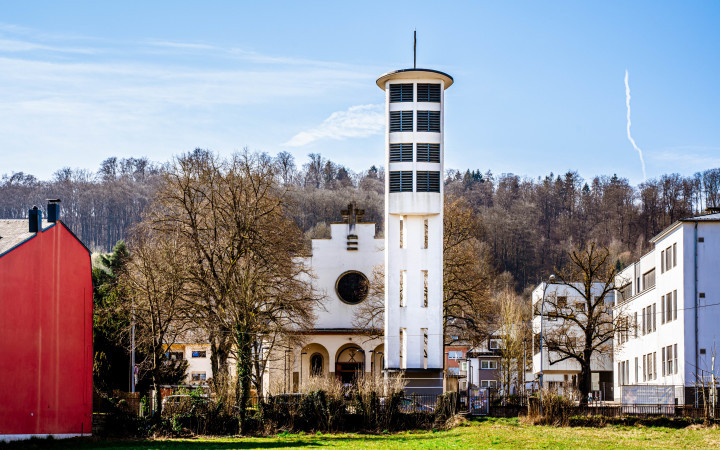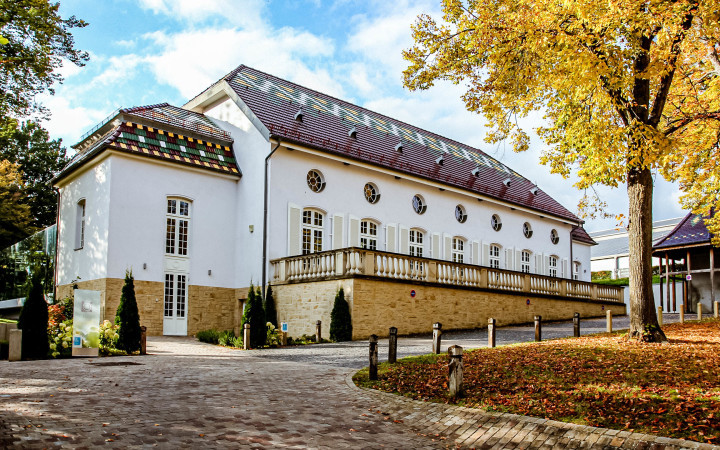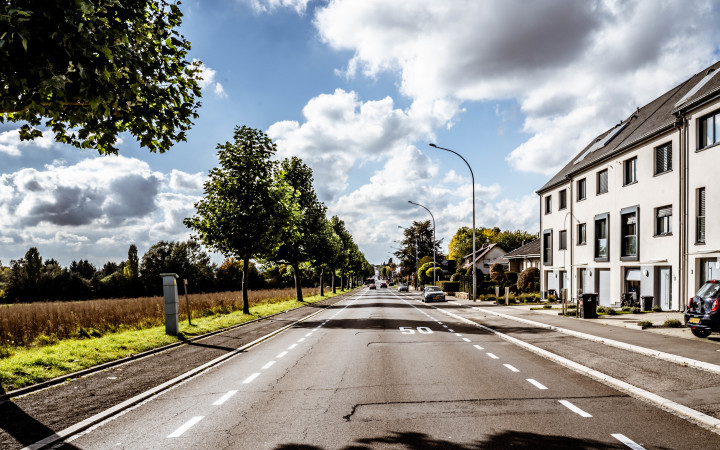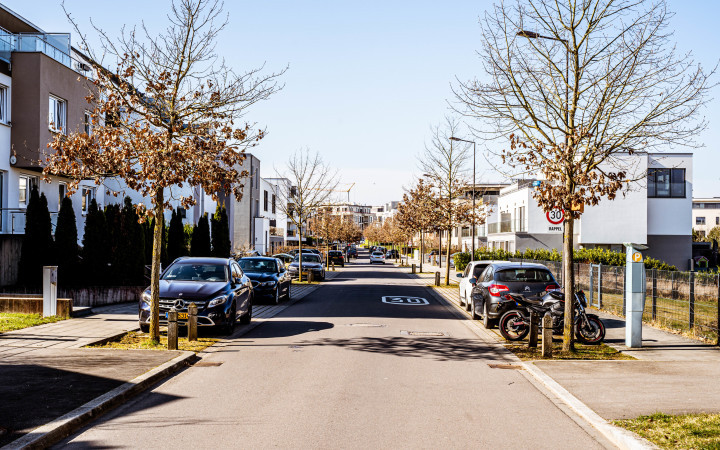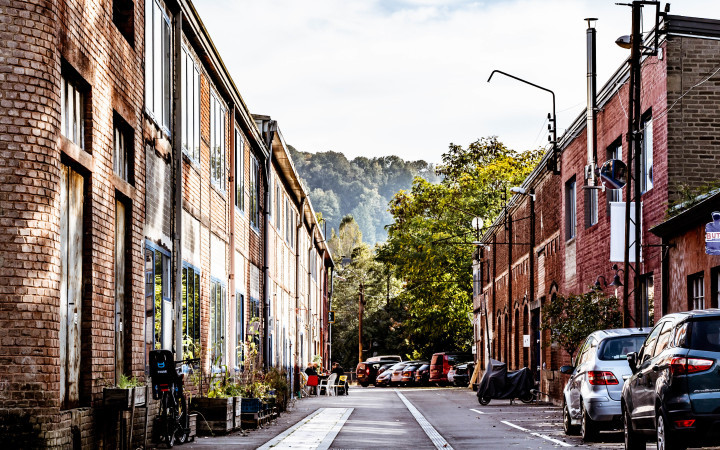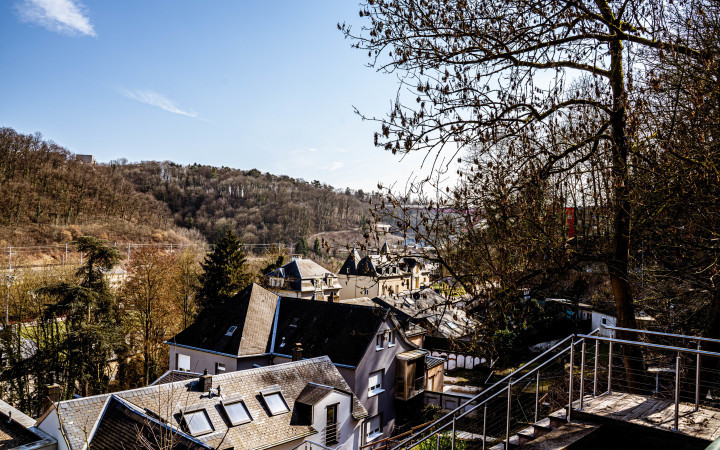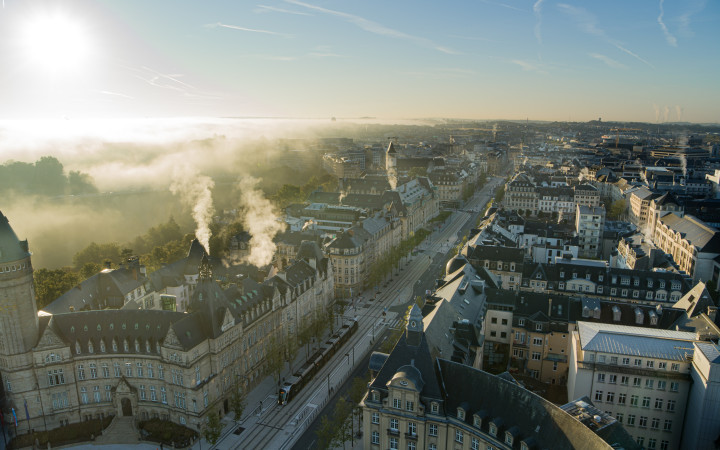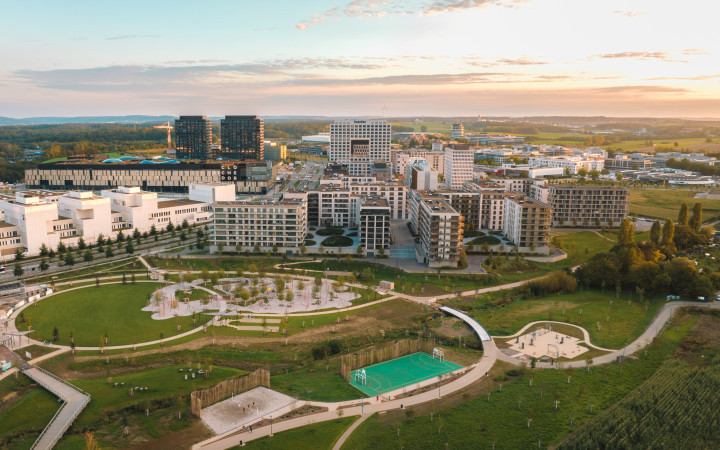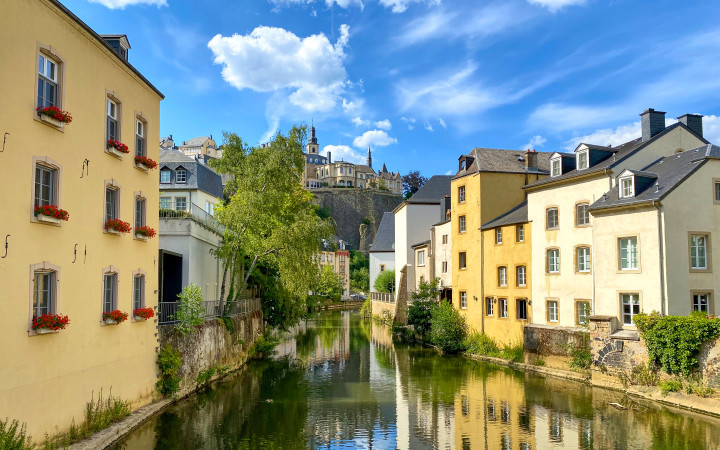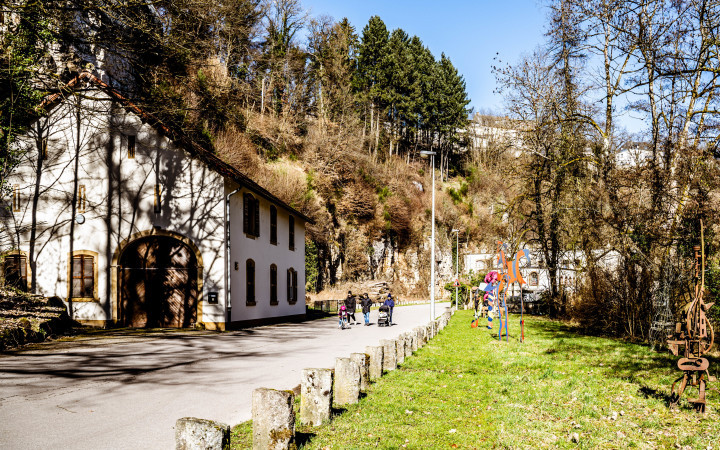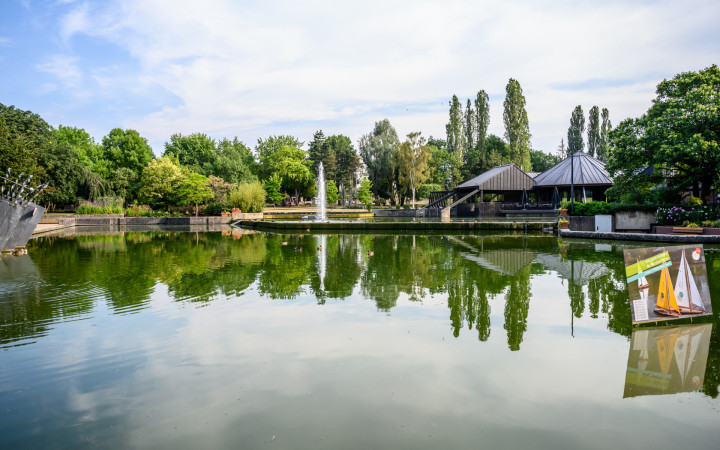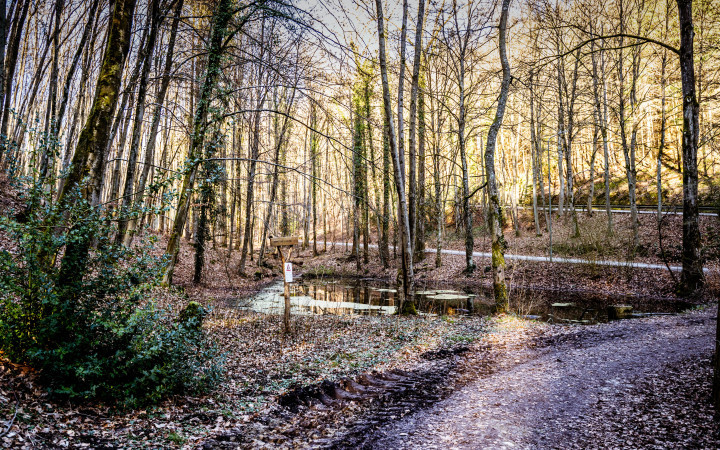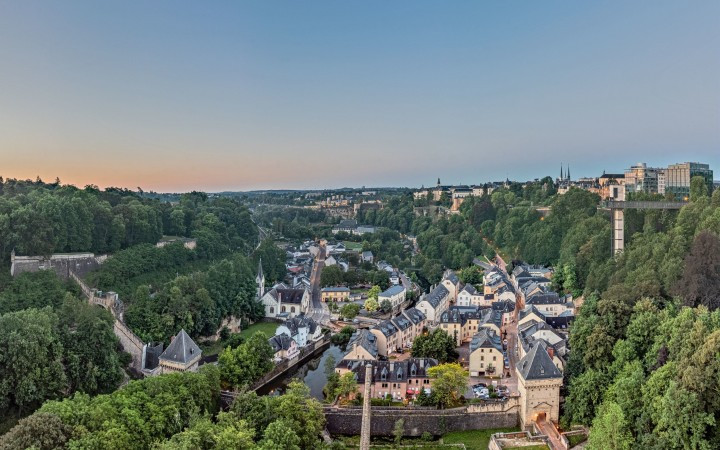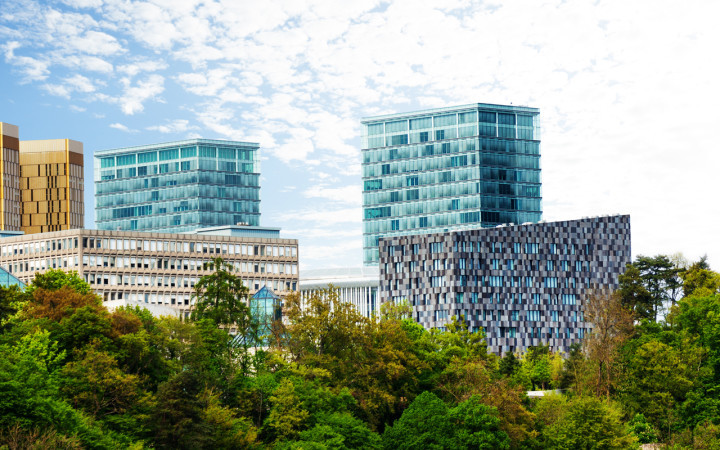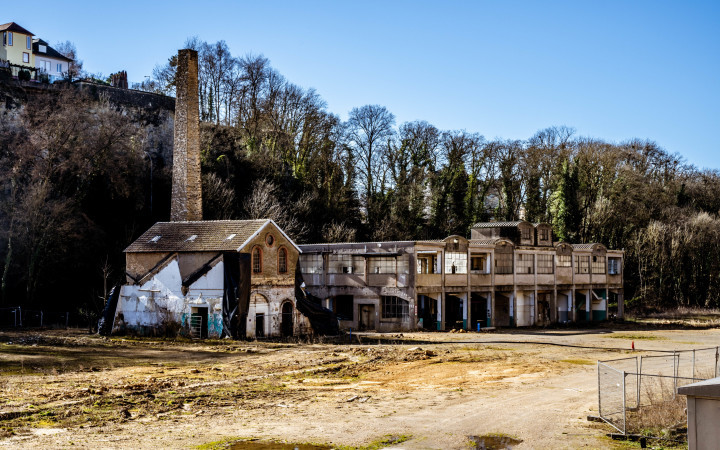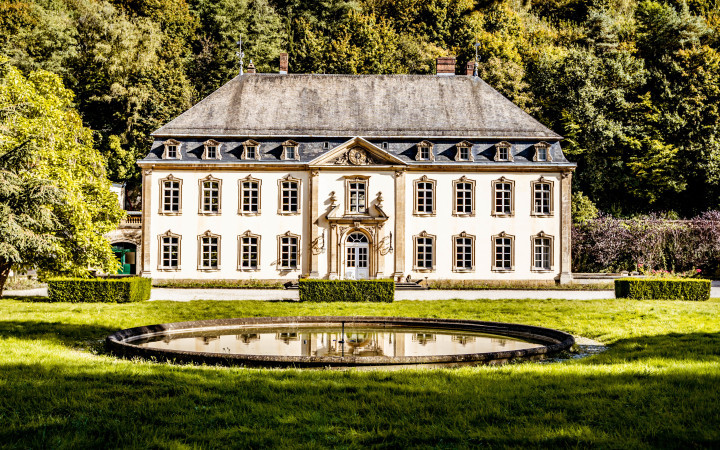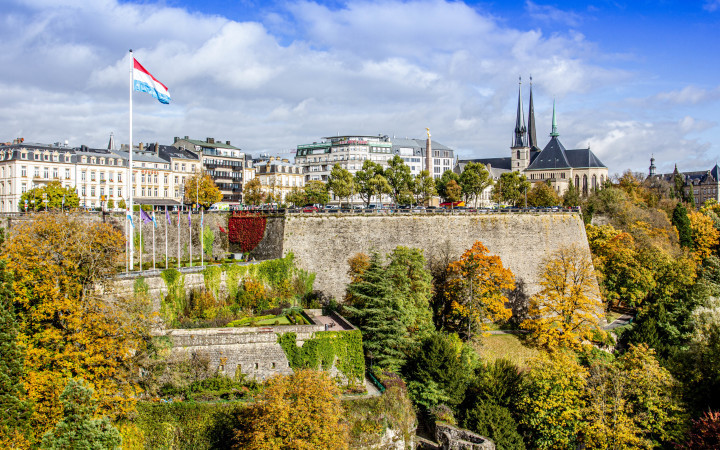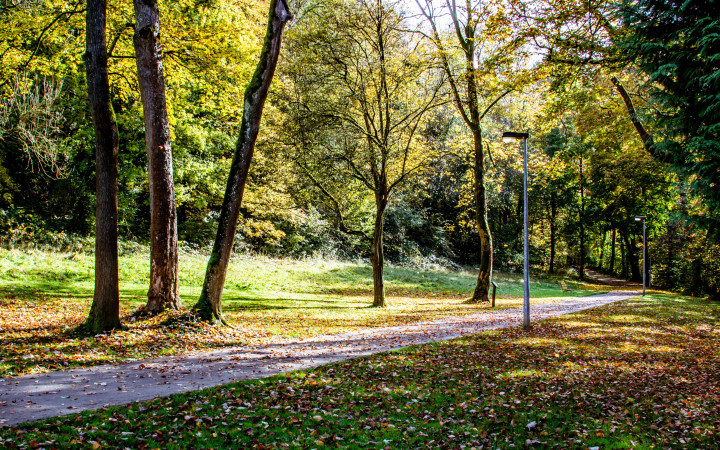
Neudorf/Weimershof
Neudorf came into being as a village at the end of the 18th century, initially through the resettlement of people who were forced to leave their homes to make way for the expansion of the city’s fortress.
The hunting park of count Mansfeld
The history of the present-day district of Neudorf/Weimershof can be said to date back to the 16th century, when the Count of Mansfeld commissioned the construction of “La Fontaine Castle” – so-called on account of the many fountains and water features in its extensive parkland grounds – in the hitherto uninhabited valley. The vast estate also boasted a hunting park, surrounded by a three-metre high, five-kilometre long wall with several gates. The name of one of these gates, the Octavian Gate, after one of Mansfeld’s sons, lives on today in the place name Tawioun, between Neudorf and the district of Cents. Much of the former castle’s woodland areas and hunting grounds were located in what we know today as Neudorf.

The economic development of the district
Neudorf came into being as a village at the end of the 18th century, initially through the resettlement of people who were forced to leave their homes to make way for the expansion of the city’s fortress. When Mansfeld died in 1604, the locals had quarried stones for their dwellings from the park walls and castle’s buildings, pavilions and archways. What had once been the Count of Mansfeld’s magnificent castle thus became the foundation stones for a new suburb. The name Neudorf, however, does not appear in the records until after the French Revolution. The name “Nei(t)-Dierfchen” or “Nei(t)duerf” was originally only given to a smaller area of land in the Huesegrëndchen valley. It was only later that “Neudorf” became the name for the entire valley stretching up towards the Kirchberg plateau.
Today’s Rue de Neudorf – the street named after the district – was not built until 1852. Around 80% of the houses in Neudorf (for a long time part of the municipality of Eich) still had thatched roofs until well into the 19thcentury. However, in 1845, this type of roofing was banned due to an increasing number of fires. In 1920, the people of Neudorf and Weimershof voted in favour of joining the metropolitan area of Luxembourg City and broke away from the municipality of Eich. The main reasons for this were a desire for a tram line and connection to the capital’s electrical grid.
The district did, in fact, get its tram line in 1923, but in October 1953, it was discontinued and replaced by a bus route. The economic development of the district owes much to the construction of the Henri Funck brewery in 1864, a major employer in the area up until its closure in 1982. Part of the former brewery was converted into a hotel later on. The valley, which is today built up along Rue de Neudorf, widens in the north – in the direction of Kirchberg – to a plain. This is where the district’s most striking buildings can be found, the Hôpital Kirchberg(which, despite its name, is not located in the Kirchberg district, but in Neudorf/Weimershof) and a major rehabilitation centre between Rue de Grunewald and Rue des Labours.

Leisure and Relaxation in the Neudorf/Weimershof district
The neighborhood offers facilities designed for leisure and well-being. Among the amenities available to the public are:
- A BMX track
- Children’s play areas
- A pétanque court
- The Henri Funk stadium
- A multi-sports field
The statue of Saint Joseph

In the Chapelle de la Résurrection (Chapel of the Resurrection) at 52 Rue Jules Wilhelm, you can view several paintings by Russian artist Maxim Kantor. Not far from the chapel and the School of Religion and Society stands a stunning, yet, alas, little-known landmark of the district: the Saint Joseph statue. This 24-metre-high statue, the pedestal of which you can enter inside, is located on Rue de Busbach, and is barely visible from the city for much of the year, as it is hidden from view by the trees from spring onwards. With binoculars, however, this striking statue can be spotted from the Bock Promontory in the Neudorf forest above Clausen. The statue of Saint Joseph, a collaboration between sculptor Frans Stacke and architect Jean Pierre Knepper, who designed the neo-Gothic-style pedestal, has been keeping watch over the city from its position on an over 60-metre-high rock ever since its inauguration in 1888.
Photo gallery
How to get there?
By car:
Find the best parking for your stay with our Luxembourg-city parking guidance system.
By public transport:
To go around the city, check out www.mobiliteit.lu which offers live and practical information on public transport in Luxembourg.
Useful information: all buses, trams and trains within the country of Luxembourg are free of charge for citizens and visitors alike.









